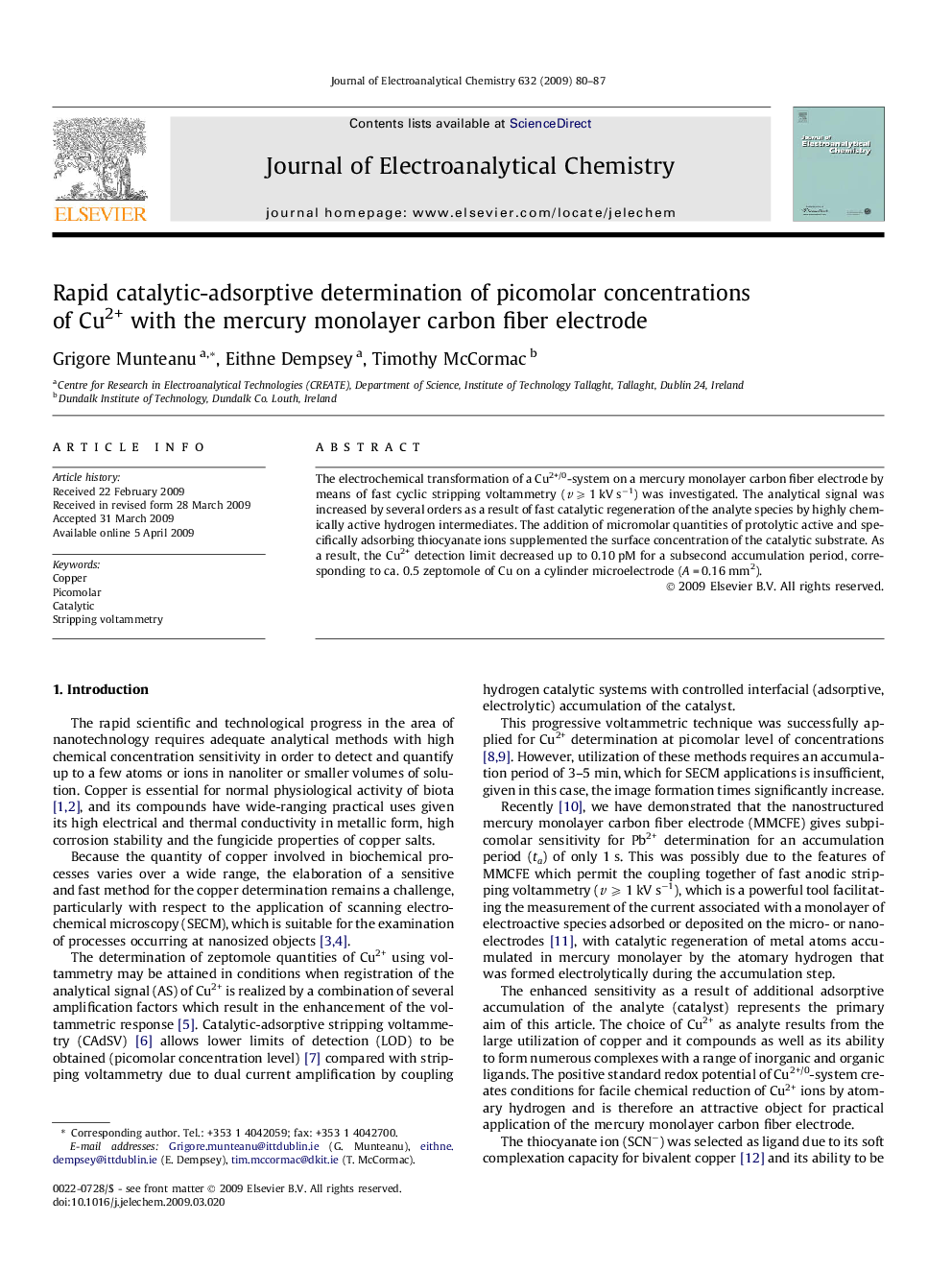| Article ID | Journal | Published Year | Pages | File Type |
|---|---|---|---|---|
| 220123 | Journal of Electroanalytical Chemistry | 2009 | 8 Pages |
Abstract
The electrochemical transformation of a Cu2+/0-system on a mercury monolayer carbon fiber electrode by means of fast cyclic stripping voltammetry (v ⩾ 1 kV s−1) was investigated. The analytical signal was increased by several orders as a result of fast catalytic regeneration of the analyte species by highly chemically active hydrogen intermediates. The addition of micromolar quantities of protolytic active and specifically adsorbing thiocyanate ions supplemented the surface concentration of the catalytic substrate. As a result, the Cu2+ detection limit decreased up to 0.10 pM for a subsecond accumulation period, corresponding to ca. 0.5 zeptomole of Cu on a cylinder microelectrode (A = 0.16 mm2).
Related Topics
Physical Sciences and Engineering
Chemical Engineering
Chemical Engineering (General)
Authors
Grigore Munteanu, Eithne Dempsey, Timothy McCormac,
